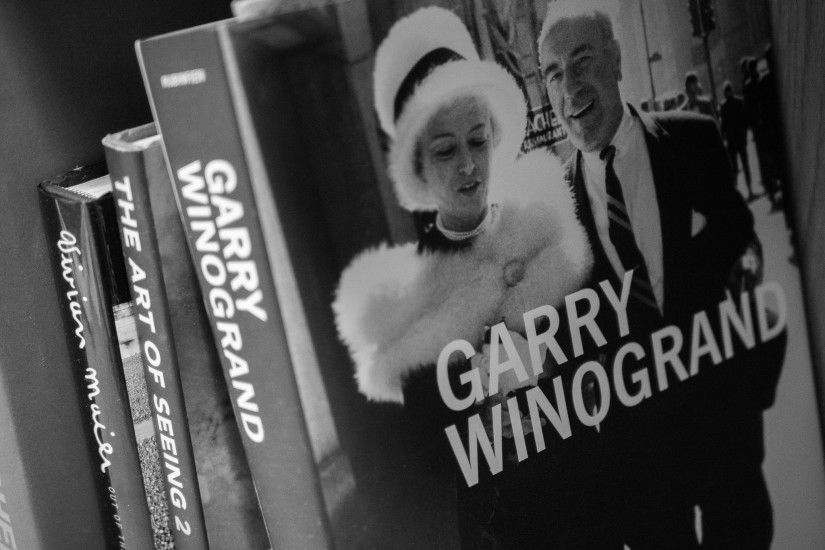Already, by 1960, Garry Winogrand was taking pictures that didn’t make any sense. Even now, we struggle to get a handle on them, but back then, before the pictures had altered the grammar of photography sufficiently to enable us to get to grips with them . . .
The amount of information in the photograph below is considerable but the ordering of it so minimal—or discreet, at any rate—it’s difficult to know how to process it. How many lives are being actively lived in this picture? What is happening? What are we looking at? For one thing, we’re looking at a manifestation or projection of our own confusion in the form of the guy scratching his head, a gesture that might for him be purely mechanical (an itch?) but which here becomes imbued with psychological and existential weight because he is asking the question we are asking: What is going on here? So the person asking this question becomes the key to the riddle of which he is a central part.
This key turns out to be compositional even though, back in 1960, it seemed to many that Winogrand had given composition the elbow—in this instance, quite literally. The elbow is the element on which the whole picture hinges. The head-scratcher’s elbow links arms, as it were, with those of the other walkers—especially the woman in the white dress, behind him and to his left—which leads, in turn, to those of the woman in the black dress, the diagonal straps of which mirror the triangulation of upper and lower arm hinged at the elbow. I don’t want to make too much of this but once you start looking it seems that the cars have somehow sprouted elbows in the form of fins, as have the trees, in the form of branches. And look at the triangular peaked cap of the parking attendant (if that’s what he is) right above the head-rubbing hand.
But something else is important, too. The abundance of information is matched always by the amount withheld. In spite—and because—of everything that’s going on, it’s impossible to tell what’s going on.
